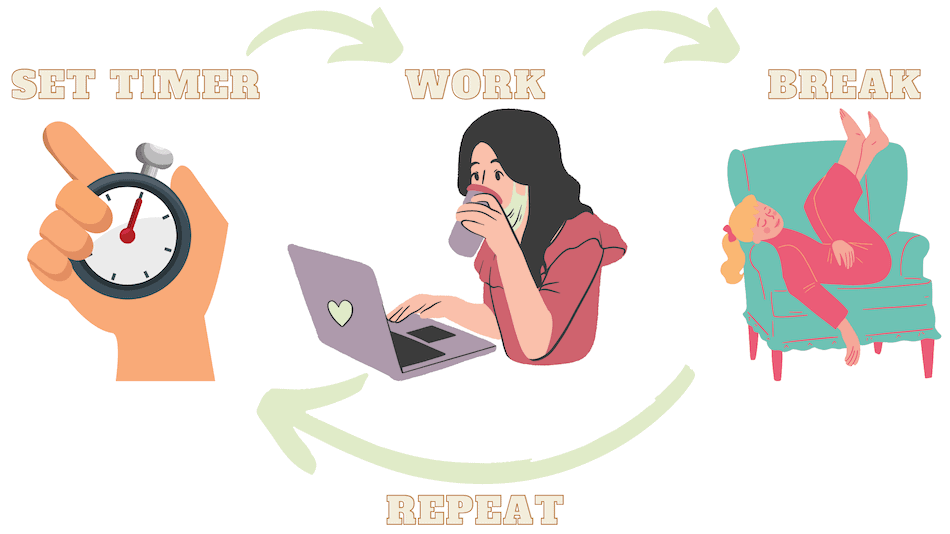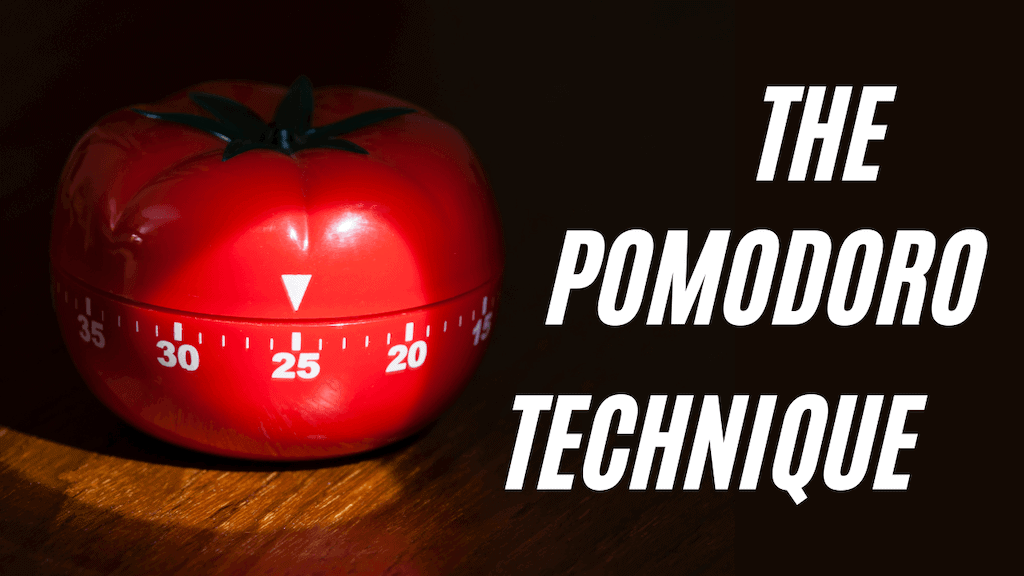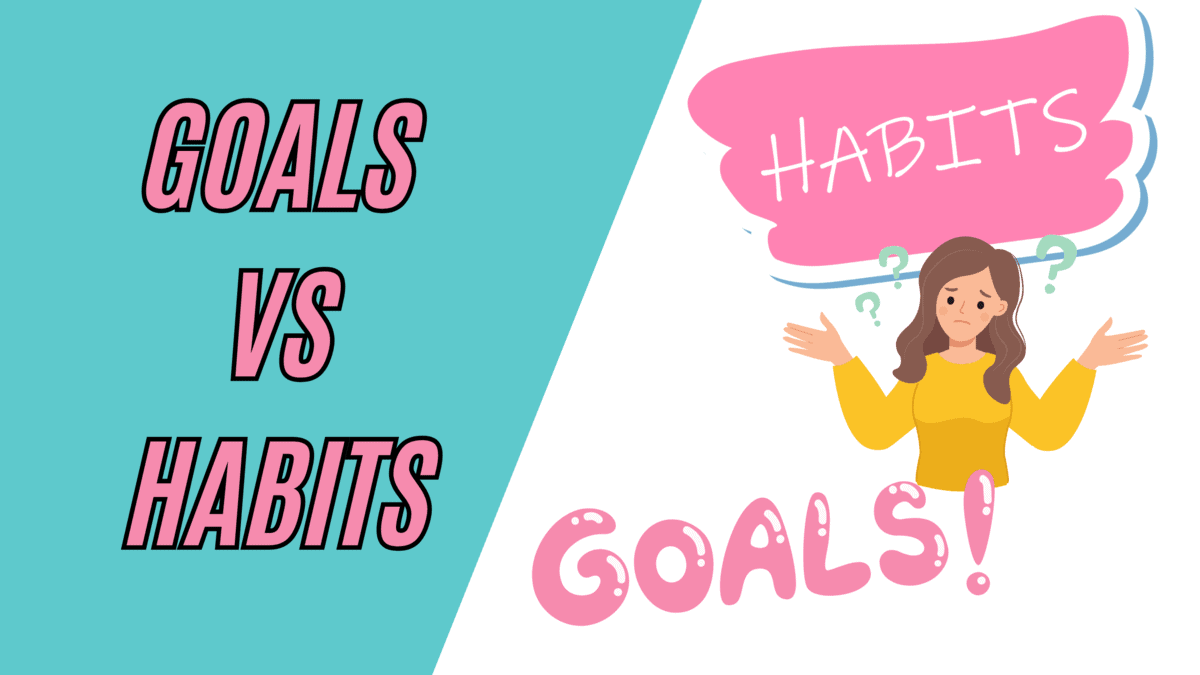When you know a project will take you 5 hours of solid concentration, do you get put off even starting?
Don’t worry, that’s where the Pomodoro technique, a time management method, comes into play.
Mr. Cirillo, who invented the Pomodoro technique, was attempting to help himself focus on a task. The aim was to resist distractions and stay focused for just 25 minutes, take a 5-minute break, and repeat. These 25-minute blocks are called Pomodoros.
Fun fact: Cirillo was struggling with his work so challenged himself to commit to 10 minutes of focused work. To do this, he found himself a tomato-shaped kitchen timer (tomato is Pomodoro in Italian), and the Pomodoro technique was born.
How the Pomodoro Technique Works
Although Cirillo wrote a 180-page book on how the Pomodoro technique works, the concept is relatively simple:
- Pick your task
- Set a 25-minute timer
- Start work
- Take a 5-minute break when the timer rings
- Set your timer for another 25 minutes and start again
- Repeat 4 times before taking a longer break of 20-minutes
- Keep going until your project is complete

The process is easy enough to follow but there are 3 rules to keep in mind to make it effective:
- Break up big projects into smaller tasks: If a project requires more than 4 Pomodoros, it needs breaking up into smaller actionable steps
- Group small tasks: Any tasks that take up less time than a single Pomodoro should be grouped with other smaller tasks
- Once the timer runs, let it run: The Pomodoro is a singular unit of time that must not be broken. This means no checking emails, texts, team chats, and definitely no social media
Why Is the 25 Minute Pomodoro Timer Technique So Effective?
Simplicity
The technique is super simple to follow along and doesn’t require a whole lot of planning time – so long as you have your tasks for the day outlined in advance.
There are plenty of tomato timers out there making it even easier to practice. Personally, I use the Pomodoro feature on Toggl.
Urgency
As you’re being ‘put on the clock’, it creates a sense of urgency to just get the work done, as opposed to sitting down with no time limit.
Helps You Resist Distractions
Cirillo states in the book that if you are beaten by distractions, you should turn the timer off and reset the Pomodoro when you continue working.
Having to reset and start again because you were ‘defeated’ by a distraction promotes a sense of failure and motivation to not let the same thing happen again moving forward.
Gamify Your Workflow
By defining every 25 minutes of focused work as Pomodoros (or tomatoes), it makes your focused work almost game-like.
How many Pomodoros did you collect yesterday? Challenge yourself to collect more tomatoes today.
Not to mention that thinking in tomatoes is more fun than thinking in hours (just remember to convert back to hours when you’re talking to your boss or clients).
Pomodoro Technique Advantages and Disadvantages
Let’s go over some of the pros and cons of using the 25-minute Pomordoro Technique.
Pomodoro Technique Advantages
Frequent Breaks
The Pomodoro Technique isn’t just about work – it’s also about rest.
By taking frequent, scheduled breaks, you’re less likely to experience burnout. These breaks serve as ‘reset’ buttons, refreshing you for another round of focused work.
Taking frequent or micro-breaks boosts your overall performance and productivity.
Easy Tracking of Productivity
One of the understated benefits of the Pomodoro Technique is how it can serve as a simple yet effective productivity tracker.
Each Pomodoro serves as a unit of work that you can easily count. Over time, you get a better sense of how much you can achieve in a day, a week, or even longer.
This eliminates the overwhelm that comes from feeling like you have an insurmountable amount of work ahead of you, and it discourages unproductive multitasking.
Easier Time Estimates for Tasks
One of the biggest challenges in any project is estimating how long tasks will take.
The Pomodoro Technique helps you build a better understanding of time requirements for various tasks, which can be extremely beneficial in project planning.
As you become more familiar with your own productivity rhythms, you’ll get better at estimating time, helping you to set more realistic deadlines and avoid the stress of last-minute rushes.
Helps You Resist Distractions
Distractions are productivity’s worst enemy. The Pomodoro Technique is designed to combat this by creating pockets of intense focus.
Knowing that a break is coming soon makes it easier to resist the urge to check your phone or drift off into daydreams. This helps you maintain high levels of focus and produce better-quality work, avoiding the pitfalls of procrastination and scattered attention.
Disadvantages of Pomodoro Technique
Pomodoro Resets if Interrupted
The requirement to reset a Pomodoro after an interruption is intended to enforce discipline.
However, this strict rule can actually be a drawback in environments where interruptions are unavoidable.
Each time you have to reset a Pomodoro, you lose the momentum you had built up, making it difficult to get back into the groove.
Timer Stops Mid-Task
Stopping the timer mid-task can make it easy to forget your train of thought or lose context after a 5-minute break, especially for complex tasks that require deep concentration.
This results in additional time spent getting back into the task, making your workday less efficient.
Pomodoro Ends After 25 Minutes
The 25-minute work period aims to balance work and rest to avoid burnout. However, if you find yourself in a “flow state” – a mental state of complete immersion in one’s work, the end of a Pomodoro can be jarring.
Re-entering this flow state can be challenging and time-consuming, which can ultimately affect your overall productivity and the quality of your work.
Pomodoro Tips
Get Away From Your Screen During Your Breaks
The biggest mistake made is not taking effective breaks. It’s easy to finish up a Pomodoro cycle on your computer and switch over to check your emails, Twitter, or Instagram.
Even switching over to using your phone instead of your computer doesn’t result in that rewarding feeling of taking a break.
Give your eyes and brain a rest from your screens. Get up from your workstation, take a walk, meditate for a few minutes, or grab a snack.
Whatever you do, make sure to get away from your workstation so that when you come back you’re more mentally refreshed.
Experiment With the Length of Pomodoros
Time management and productivity are no one size fits all and the Pomodoro method is no exception.
Your work may involve tasks that require long stretches of creative workflow such as coding and writing. If you find that the 25-5 Pomodoro cycle isn’t enough, try a longer work session with proportionately longer breaks.
There’s a study that claims that 52 minutes of work with a 17-minute break is the optimal formula for perfect productivity. Personally, I like to use the traditional 25/5 split.
Try varying your Pomodoros based on your energy levels and type of task to find a happy medium that works for you.
Looking for a more flexible alternative to the Pomodoro Technique? Try the Flowtime Technique to customize your work intervals and breaks.
Pomodoro FAQs
The Pomodoro method was invented by Francesco Cirillo, who was looking for a way to improve his focus and productivity.
The Pomodoro technique was invented in the late 1980s when Francesco Cirillo used a tomato-shaped kitchen timer to time his work intervals.
The Pomodoro technique is effective because it breaks work into manageable intervals, creates a sense of urgency, helps resist distractions, and gamifies the workflow, making it more engaging and fun.




